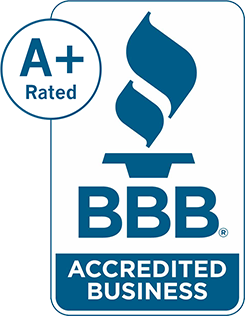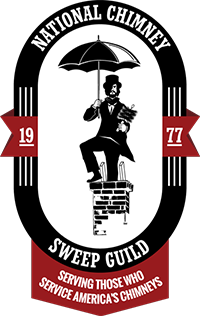Hire Ozark Stove & Chimney for Chimney Flashing Repairs & Replacement
A leaky chimney is a major inconvenience – as is hiring someone to fix it. Finding a chimney service company that you can trust can be difficult and repair work can be costly if water damage is too advanced… which is why taking a proactive approach with a chimney protection plan is the best option against chimney leaks.
By waterproofing your chimney, making sure your chimney cap is sized and fitted correctly and tightly by a professional, and having chimney flashing installed, you can get ahead of leaks before they even happen. For residents in Southwest Missouri and Northwest Arkansas, Ozark Stove & Chimney is available for all of your chimney repair and maintenance needs.
If you’re in or near Greene County, MO or Benton County, AR, we’re here to help. Reach out today.
What Is Chimney Flashing?
Chimney flashing is installed where the chimney and the rooftop meet. It is typically made of aluminum or another malleable metal and sealed with tar or some type of waterproof sealant. There is often a gap where the roof and chimney intersect that is especially vulnerable to water entry. If installed correctly, flashing ensures that the gap is watertight and will direct water off of your roof. Proper chimney flashing is done in multiple steps:
- Base flashing: This is the bottom layer of flashing that is installed underneath the shingles and bent in an L-shape upward against the brick chimney. It should go up the sides of the chimney to create a waterproof barrier.
- Step flashing: Step flashing is layered over the base flashing. During this process, individual pieces of aluminum (or an alternative metal) are installed on a slant that should resemble stairs.
- Counter flashing: Counter flashing is positioned over the step flashing. The upper pieces of counterflashing are usually tucked into chimney mortar joints and overhang various pieces of the base flashing.
So, while flashing looks sleek and simple, the installation process is more complex than most assume. That’s why trusting our team of experts for the task is always the recommended approach.
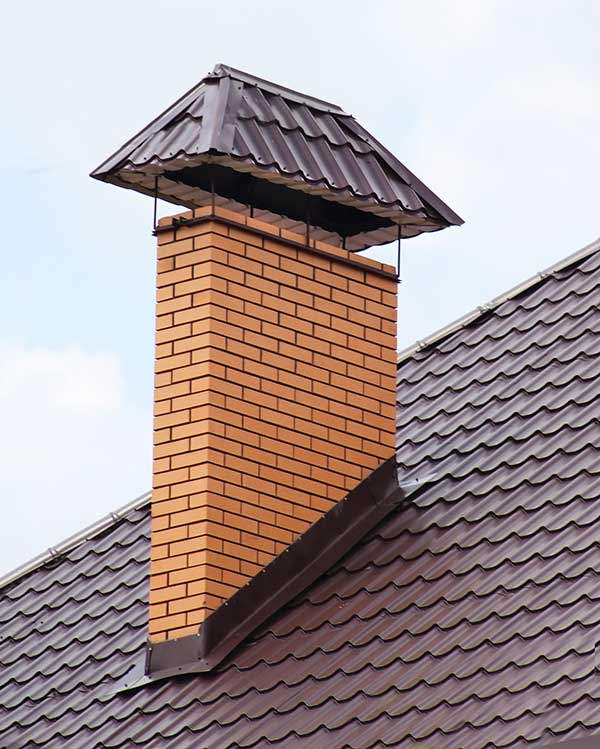
What Is the Best Material for Chimney Flashing
Now, having new flashing installed isn’t as simple as booking the appointment. You also get some say in the process by deciding which material would be best for your setup. So, what are your options?
Aluminum is the most commonly selected material for chimney flashing, but galvanized steel and copper can be used as well. Each material has pros and cons that you should take into consideration when discussing options with your chimney technician.
Aluminum
Aluminum tends to be the go-to choice for chimney flashing, and with regular maintenance from a certified tech (like one of us here at Ozark Stove & Chimney), aluminum can last up to 20 years. The biggest benefit of aluminum, though, is that it’s resistant to corrosion and rust, so you can stress less when the weather turns rainy. As a lightweight metal, it’s often chosen because it is pliable and easier to install. Oh yeah – and it’s also considered one of the more affordable options. However, its weight can also be a drawback as it can be prone to damage and bending.
Galvanized Steel
Up next – steel. One of the biggest draws of galvanized steel is its durability. In contrast to aluminum’s lightweight stature, galvanized steel is known for being heavier and stronger – and therefore more resistant to damage from possible collisions. A big downside of galvanized steel, though, is that it is not naturally corrosion-resistant. Because of this, it’s coated with a layer of zinc that protects it from rust. Just keep an eye on it because this coating will eventually wear off.
Copper
Is there an option that combines the best features of both aluminum and galvanized steel? Well, that’s where copper comes in – it’s both lightweight and naturally resistant to corrosion and rust. In addition, it tends to last longer than other chimney flashing materials with a life span that can exceed 30 years. And if you’re looking to go greener, copper is also a recyclable material. So, with all these amazing pros, why isn’t copper the premier option for chimney work? It’s also the most expensive option of the bunch.
I’m Getting a New Roof, Do I Need New Chimney Flashing?
You’re getting a new roof – that’s great news! …but you just have your flashing done within the last few years, and now you’re wondering if you’ll have to have it re-installed all over again, tacking on more expense to an already hefty roofing bill.
Well, every situation is different, so we can’t say for sure either way, but it is possible to avoid a full replacement if the original flashing is in good condition and can be removed without damaging it.
If your flashing is rusted, has holes, or has separated from your roof, though, it will need to be replaced. After all, what good is a new, costly roof if faulty flashing is going to lead to leaks before you get your money’s worth?
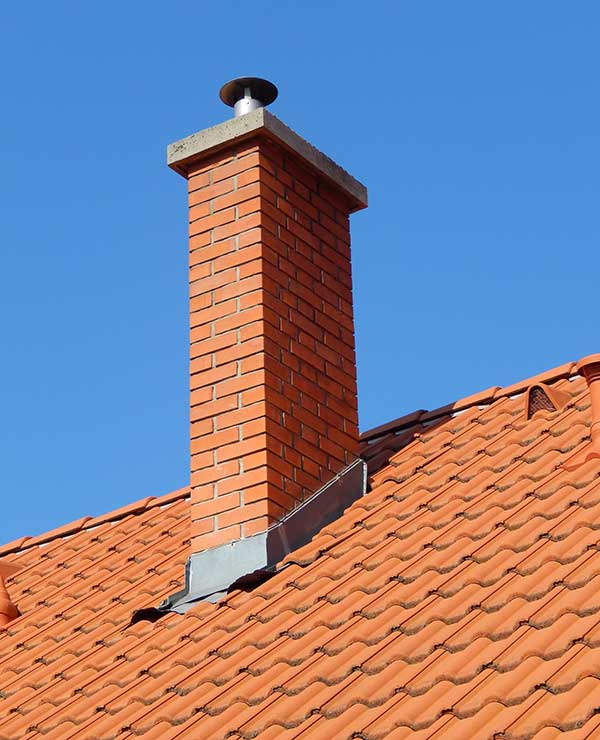
What Are Some Common Chimney Flashing Problems?
Because flashing is a source of a lot of chimney leaks, knowing the most common reasons for damage – and how you can be vigilant about avoiding them – is important.
For instance, if you have aluminum or copper flashing, a fallen tree limb or other debris can cause the flashing to bend or dent – which then opens up gaps where water could seep in.
Another recurrent issue our technicians have come across is corrosion. If you have chimney flashing made of galvanized steel, the zinc coating that protects it from rust can wear away or be damaged, exposing the steel to rust and corrosion.
And don’t rule out the possibility of animal tampering. Sometimes curious critters can cause any previous damage to worsen by tampering with bent pieces or make holes even bigger. If they see a possible entry point into your home, you can bet they’ll take advantage of it.
Schedule annual inspections with our crew, so we can keep a close eye on the condition of your flashing materials.
Signs of Chimney Flashing Damage
You suspect your chimney flashing may be damaged but you aren’t completely sure… What should you look for?
- Ceiling and wall staining
- Rotting wood in your home
- Peeling wallpaper
- Bubbled paint
- Mildew and mold growth
- Damaged masonry
- Discoloration around your fireplace or wood stove
If you think your chimney flashing has been damaged, do not wait to get it repaired. If a chimney leak isn’t corrected as soon as possible, you are putting your home at risk for worse damage – and the longer you take to address the problem, the more expensive it will be.
Don’t hesitate to schedule an appointment with our team, so that we can tackle your problems and save you money in the long run.
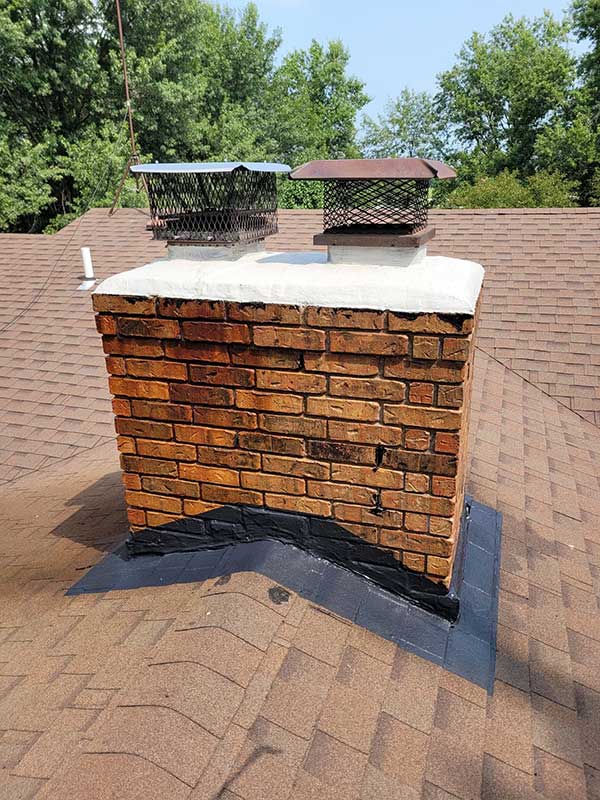
What Is a Chimney Cricket?
If you are having your chimney flashing repaired or replaced, ask our chimney technician if you should also install a cricket. A cricket sits on the uphill roof slope behind the chimney and it prevents water from collecting around the flashing. It also redirects debris and water off of your roof, reinforcing the effectiveness of your waterproofing.
Crickets are custom-built to fit your chimney using the same material as your chimney flashing. Crickets are not necessary for all chimneys as the National Fire Protection Association (NFPA) 211 Standards and the International Residential Code require a cricket to be built only if your chimney is 30 inches or wider.
Looking for quality service? Call us or schedule online today.
How Long Does Chimney Flashing Last?
That varies depending on what type of material was used and the quality of the installation work. If you select Ozark Stove & Chimney for your chimney flashing job, you will get experienced, Chimney Safety Institute of America (CSIA)-certified chimney technicians that are among the best in the business. With the right material and proper installation, your chimney flashing should last many years.
What Causes Chimney Leaks?
A leaky chimney not only makes your system unsafe for use, but it can cause damage – unsightly damage, at that – to occur throughout your fireplace, wood stove, and home. Long story short, chimney leaks are a huge headache that no homeowner wants to deal with.
Unfortunately, though, chimney leaks are one of the most common issues a homeowner experiences… The good news is that by knowing what causes them, you can work to avoid them down the line. There are several issues that can cause your chimney to leak:
- Missing or Cracked Chimney Crown: The chimney crown is the concrete slab on the topmost part of the chimney structure that protects your chimney from the weather. Gradually, the crown can become fragile and crack due to the amount of moisture it absorbs and the temperature changes it undergoes. If the crown cracks, water can get into your chimney and wreak havoc.
- Cracked Chimney Masonry: Masonry is durable, but it’s not damage-proof. Over time, the masonry materials used to build the chimney can deteriorate due to weather exposure, the freeze/thaw process, natural decay, and more. And the larger any damage or cracking becomes, the easier water will gain access to the rest of your system – and your home too.
- No Waterproofing: Have you heard the comparison of brickwork being like a sponge? It may be hard to believe, but it’s unfortunately very true. Fortunately, waterproofing products are in place in our industry to avoid deterioration and all kinds of expensive repair work – as well as issues triggered by the freeze/thaw process.
- Chimney Cap Problems: Have you ever been out sans-umbrella only to be caught in a downpour? It’s not ideal for humans, and it’s not ideal for chimneys, either. The chimney cap is essentially your chimney’s umbrella – a protective metal covering installed at the top of the flue or crown to keep rain, snow, animals, and debris out. If the chimney cap is damaged, missing, or improperly installed, water can enter the chimney, leading to leaks.
- Faulty Craftsmanship: There is a science to designing and building a chimney and human error is an unfortunate reality. If your chimney has not been built at the correct slope or hasn’t been properly sealed, it may be susceptible to leaks.
- Extreme Weather: Weather in the Ozarks can shift and vary. Intense storms with heavy rain, hail, high winds, and snow can worsen chimney problems you weren’t previously aware of or create new issues altogether. You may not be able to control the weather, but you can stay on top of potential chimney troubles with regular chimney inspections.
- Condensation: Chimney condensation is also a common cause of chimney leaks. Since you’re most likely to use your furnace, wood stove, or fireplace during cold periods, the warm air from a fire can create condensation when it meets the cooler surface of the chimney. The water that results from condensation can be absorbed in the chimney’s housing creating water vapor buildup and damage.
- Damaged or Missing Chimney Flashing: Chimney flashing helps protect the base of your chimney from water. Flashing is usually sealed with a waterproof sealant. When the flashing is missing, or damaged, or the sealant erodes, your chimney will be exposed to water damage. Defective flashing is often the root cause of chimney leaks.
Does Ozark Stove & Chimney Serve My Area?
We proudly serve Green County, Christian County, Stone County, Dallas County, Benton County, Marion County, and more. If you live in Springfield, Branson, Joplin, Bentonville, Rogers, Bella Vista, Fayetteville, Harrison, Ozark, Neosho, or anywhere else nearby, book an appointment with us.
If you’re not sure if we will come to you, give us a call and one of our representatives will see what we can do to accommodate you!
Our Certifications & Memberships
The Ozark Stove & Chimney team is committed to continuing to learn about the latest technology, techniques, and anything else remotely associated with chimney care. As leaders in our industry, we believe that keeping our collective knowledge base up to date is essential to giving our customers the experience that they deserve.
We are certified through and are members of the following organizations:
Chimney Safety Institute of America (CSIA)-Certified
SaverSystems/HeatShield Factory-Trained
Better Business Bureau (BBB)-Accredited
National Chimney Sweep Guild (NCSG) Members
Is Your Flashing Damaged? Hire Us for Your Repair Needs
No one wants to hear that dreaded drip, drip, drip coming from anywhere in their home… and especially not the chimney for your wood stove or fireplace where fires are meant to be enjoyed. Not sure what’s causing your chimney leak? It could be the flashing or… it could be something else. What’s most important is getting to the bottom of the issue with help from our professionals. Whatever the case, we’re here to help and offer effective solutions and care plan.
You can visit our website to schedule an appointment or call us at 417-201-6585. Our customer service representatives can’t wait to help you.
The protection from chimney waterproofing will last for years and years as well as reducing the need for leaky chimney repair, so call on us to get the job done.


